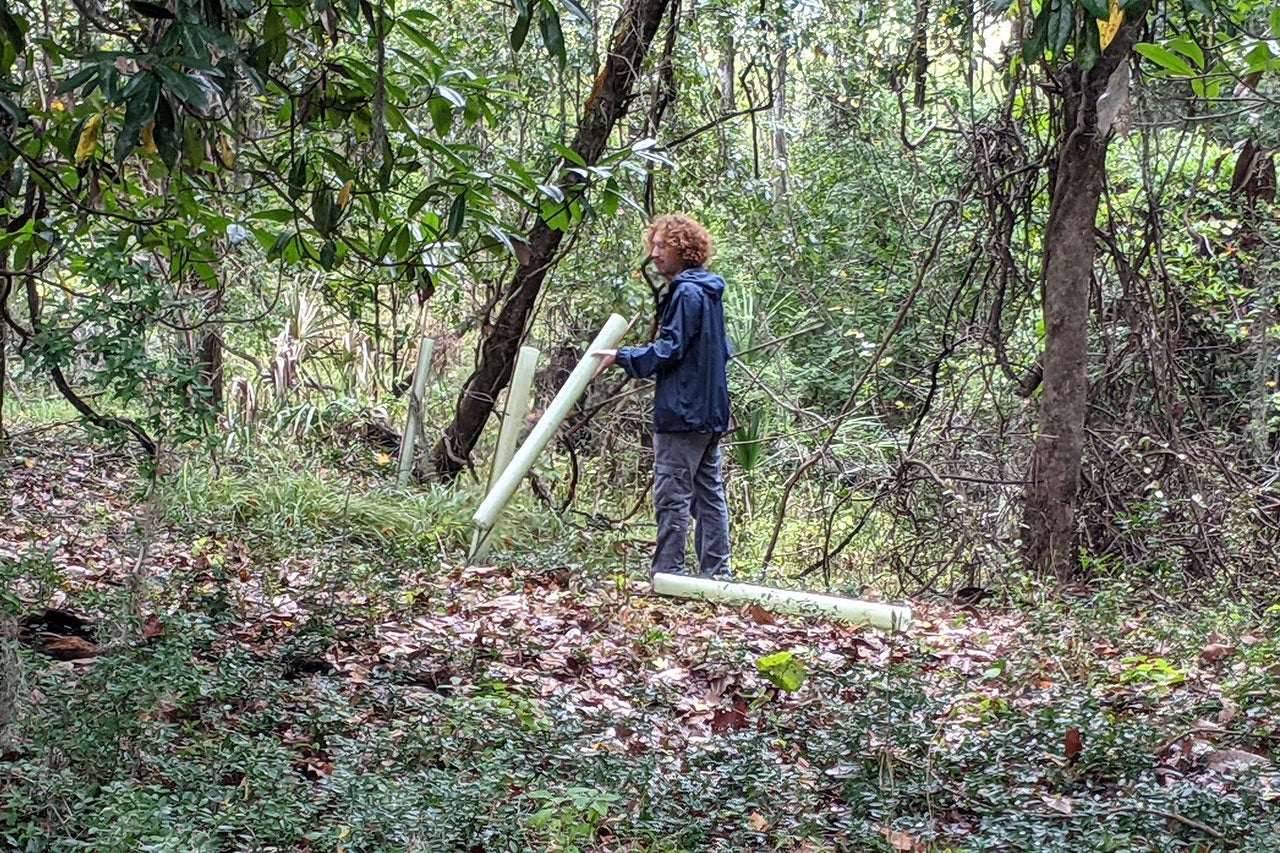Above: Student Palin Kayser inspects a tree shelter covering a sapling at Stono Preserve.
The College of Charleston is known for its prime location in the heart of downtown Charleston. But the bustling environment of the Holy City isn’t the only landscape the university has for students to explore.
That’s why Matt Rutter, biology professor and academic director of the College of Charleston at Stono Preserve, decided to create opportunities for students to go to the institution’s 881-acre property along the Stono River to learn about its variety of ecosystems including long-leaf pine forests, wetlands, savannahs and tidal marshes and help support the diverse environments there through conservation efforts.
Students have jumped at the chance to visit the College’s majestic property located about 20 miles from the Charleston peninsula.
“I just wanted to go see a natural habitat,” says Alannah Burrill, a biology major and environmental and sustainability studies minor. “The property is amazing, and I enjoyed meeting other students interested in the same thing as me. It was cool to see what a place in Charleston would be like if humans weren’t around.”
“It was really good to explore what the College has for biology majors,” adds Emma Stacy, a biology major on the pre-med track. “The walking trails are gorgeous, and we found some interesting mushrooms.”
Burrill and Stacy were among a group of students who made a recent trip to Stono Preserve to inspect young trees and set up bluebird boxes ahead of nesting season next year.
They checked on 250–300 saplings that a previous group of students planted last year, including redbuds, toothache trees, slash pines and live oaks, which were protected in long tubes called tree shelters. If the tree had died, the students collected the tree shelters to use again.
Stacy noticed that the plants closer to the marsh weren’t doing as well as those further inland. She also found that trees with netting over the tube fared better than those without.
“Overall, we found the trees are doing quite well,” says Rutter, who notes that by having a more diverse forest, Stono Preserve will be able to host a wider range of plant and animal life. “These students have helped us to plan for our next tree planting coming up in the winter.”
The students also helped the bluebird population by installing 24 bluebird boxes to serve as nesting spots. Eastern bluebirds and Carolina wrens are likely to start using the boxes to set up nests in early spring.
There are more upcoming ecological projects at Stono Preserve, including an invasive species removal project planned for later this month.
“Removing non-native plants is a perpetual battle,” explains Rutter. “This is an opportunity to hack at plants and feel good about protecting our ecosystems.”
Rutter expects to hold four to five conservation events for students to participate in each academic year at the Meggett, South Carolina, property.






